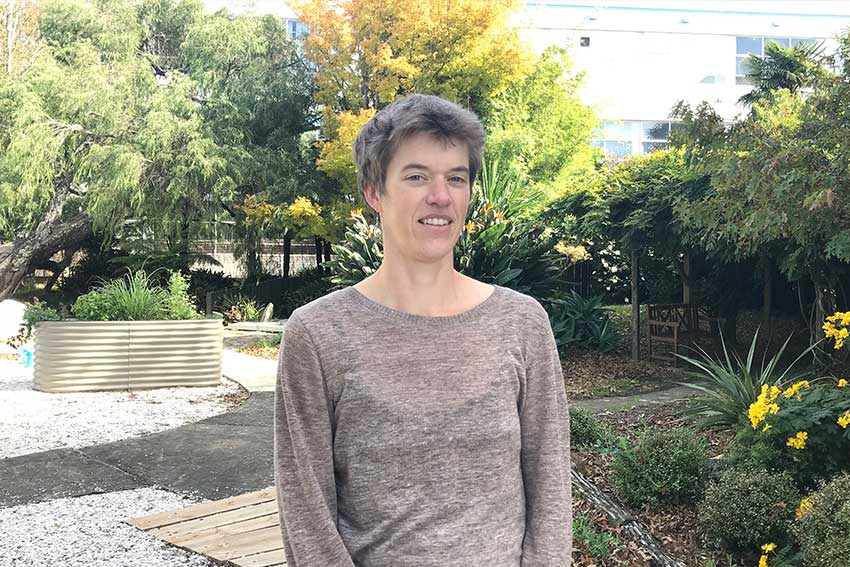Disparity in chronic pain services

With New Zealand's high prevalence of chronic pain, diverse cultural mix and disparities in healthcare, it seems pertinent to examine whether our chronic pain services are meeting the needs of the population.
Associate Professor Gwyn Lewis at AUT's School of Clinical Sciences says: "The people who are attending our chronic pain services are not representative of the New Zealand population. Ethnic minority groups tend to be significantly under-represented and show more severe symptoms."
Data collected across seven district health boards (DHBs), covering almost 60 percent of the country, was used to compare the expected and actual attendance at chronic pain services.
Europeans were over-represented by nine percent, while people of Pacific and Asian descent were under-represented by 58 percent and 49 percent respectively. Māori were under-represented by seven percent.
According to the New Zealand Health Survey, more than 20 percent of adults experience chronic pain, which is defined as any pain that lasts for more than three months.
The impact of chronic pain is multi-dimensional, affecting the individual physically, socially, psychologically and spiritually. This is felt not only by the individual, but family, friends and the community as well.
The prevalence of chronic pain varies slightly by ethnicity - European (22 percent), Māori (22 percent), Pacific peoples (15 percent) and Asian peoples (13 percent).
A multidisciplinary approach to chronic pain management is widely considered best practice. This involves medical doctors, physiotherapists, psychologists, and nurses, among others, working together with patients to improve their physical, psychological, work and social function.
In New Zealand, most multidisciplinary chronic pain services are provided by DHBs, accessible by referral from a general practitioner (GP).
Disparities in healthcare are not isolated to chronic pain. For Pacific peoples, who have the lowest socioeconomic index in New Zealand, financial costs limit attendance at primary healthcare services. Other barriers to access include language and communication, appointment availability, rushed consultations, an unwelcoming reception and lack of Pacific presence.
However, there are aspects of pain and pain management that uniquely affect how different ethnic groups access and engage in treatment.
Cultural influences on pain coping styles, support systems and beliefs about pain or pain management may influence the acceptability of attending a chronic pain clinic.
"There are different views of chronic pain across ethnicities. For some people, it's not acceptable to talk about chronic pain outside the family. It may be that Pacific people report it less and, for that reason, are not being referred for further treatment," says Associate Professor Lewis.
Māori, Pacific and Asian people are less likely to reveal pain to others. They will also potentially ignore or endure pain for longer before seeking treatment. Those who did attend a chronic pain clinic had higher levels of pain and a significantly higher need for healthcare compared to Europeans.
Māori, in particular, had greater disability, higher levels of depression, anxiety and stress, and lower self- efficacy to manage pain. They also had more pain-related fear and catastrophic thoughts related to pain.
The under-representation of Asian peoples at chronic pain clinics predominantly affects Chinese (36 percent) and Indian (33 percent) communities in New Zealand.
It is part of Chinese philosophy to bear suffering from a young age, which may contribute to a reluctance to complain about pain or seek treatment for it. Also, traditional Chinese medicine centres around alternative treatments, such as acupuncture, massage, manipulation and herbal supplements.
Similarly, in Indian culture, it is a sign of low character to be distracted by pain or suffering. Pain is often viewed as having a constructive purpose and the focus is on finding a meaning for the pain rather than removing it. Families are also seen as a great source of strength and support for Indians with chronic pain.
The disparity in attendance at chronic pain clinics suggests that, for some, the GP referral system is failing - whether it be discrepancies in how patients are referred, the referral acceptance process or the patient's level of engagement.
In New Zealand, the dominant ethnicity of practitioners is European. Evidence shows that clinicians interpret pain through their own cultural lens. Stereotyping and lack of understanding about different cultural views influence whether a GP will refer a patient for further treatment.
They may also make presumptions about a patient's interest in or acceptance of certain forms of treatment. A multidisciplinary approach to chronic pain management requires active participation. The patient needs to be ready and willing to change their behaviour.
Associate Professor Lewis says it's important to raise awareness and understanding of chronic pain services among Māori, Pacific and Asian communities, as well as the GPs that serve them.
The recommendations of the study include greater diversity across health promotions and clinical staff, as well as longer consultations to help build relationships and establish trust. Current pain therapy options could also be adapted to make them more culturally meaningful.
"It would be relatively easy to integrate Māori, Pacific and Asian cultural practices, because multidisciplinary chronic pain services are holistic by nature. One of the only things missing is a spiritual component," she says.
The reasons why ethnic minorities are not accessing chronic pain services are multitude and complex. And, further research is required to pinpoint the root cause.
The study was a collaborative project between AUT's Health and Rehabilitation Research Institute and Counties Manukau District Health Board, which began as a self-initiated review of the chronic health services of the latter. The initial work was carried out by fourth-year physiotherapy students at AUT.
Ethnic disparities in New Zealand’s chronic pain service video